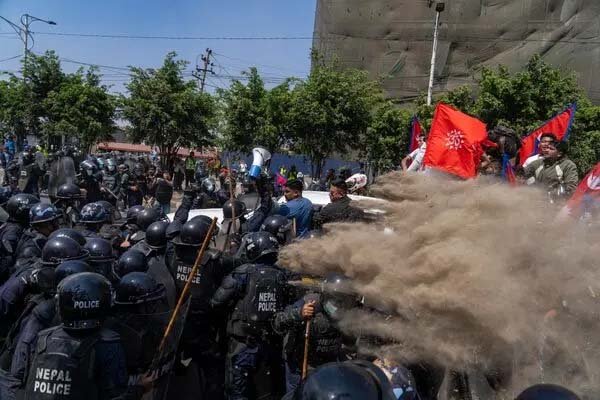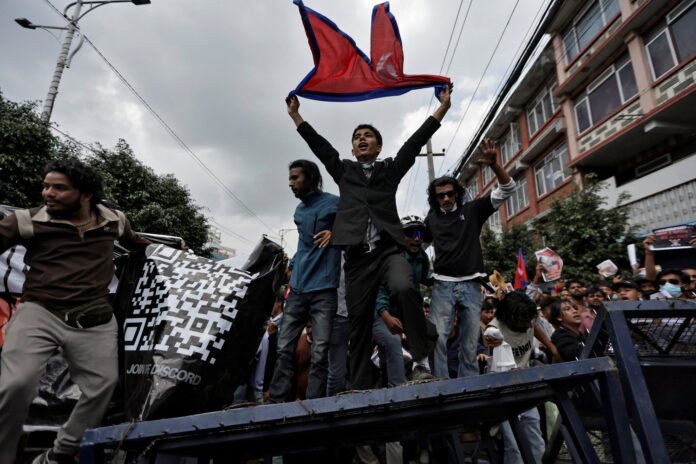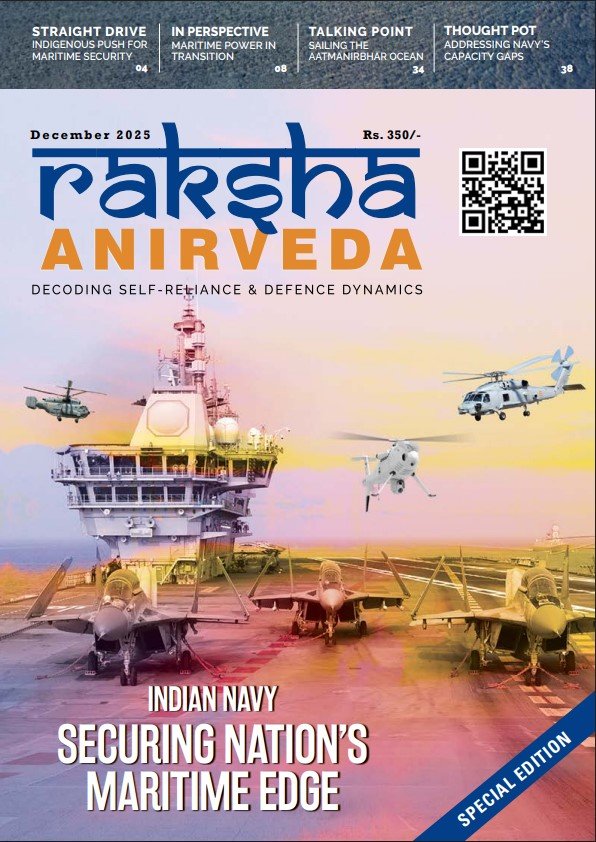Once again, Nepal is in the eye of the storm. Kingdom, republic, coalition after coalition changed labels, but the faultlines never quite closed. However, the present storm has its epicentre beyond the domestic crisis and needs to be seen through the canvas of South Asia, where great power rivalry between China and the US creates deep state tool lists.
The riots of September 2025 are only the latest reminder. On the surface, it began with something that sounded trivial: the government banning Western Facebook, Instagram, YouTube and other platforms while retaining the Chinese apps. In reality, this was only the matchstick. The undercurrents were spreading for a while.
Social media provided a connectivity to the landlocked kingdom, for many, an e-commerce market space and a networking hub for livelihood. Pulling the plug felt like a deliberate strike on their daily survival. When the Oli government invoked ‘regulation’ as its excuse, nobody bought it. What erupted on the streets was not about connectivity; it was about dignity.
Within hours, the chants turned raw: corruption, nepotism, the endless privilege of political families. ‘Nepo Kids’ became the anthem. The state replied with teargas and rubber bullets; 19 people were killed, and hundreds were injured. Oli’s government scrambled to restore the platforms, but the damage to its authority was done. The exit of Oli and the resignations of the President and Ministers were inevitable.
Social media provided a connectivity to the landlocked kingdom of Nepal, for many, an e-commerce market space and a networking hub for livelihood. Pulling the plug felt like a deliberate strike on their survival. In addition, what erupted on the streets was not only about connectivity; it was about dignity
Why Nepal is Never Just About Nepal
Nepal’s unrest resonates far beyond its borders because of its geography. Wedged between India and China, the country is more than a small state. It is both a buffer and a bridge.
For India, Nepal is critical. The 1,770 km long open border brings economic opportunities but also vulnerabilities in trafficking and security. Nepal and India share a historic and cultural bond. Nepal’s rivers could power regional energy networks. Politically, stability in Nepal ensures a secure northern frontier, while instability creates space for adversaries to move in.
For China, Nepal is a gateway to South Asia and a sensitive frontier with Tibet. Infrastructure projects under the Belt and Road Initiative are designed to reduce Nepal’s reliance on India and to bring it closer to Beijing. Stability in Kathmandu also matters for China’s internal security, ensuring that Tibetan activism does not gain ground.
For the United States, Nepal has become part of its anti-China and South Asian footprint calculus. The Millennium Challenge Corporation and broader development aid provide Washington with a foothold in South Asia at a time when Chinese influence is expanding rapidly.
Nepal is not peripheral. Its politics are watched closely in Delhi, Beijing, and Washington alike.
Foreign intrigue aside, Nepal’s wounds are self-inflicted. Over 120 ethnic groups, caste and class divisions, decades of unkept promises, this is the country’s backdrop. The youth on the streets today know that corruption is robbing them of their futures. Their protest is not abstract ideology; it is survival politics
External Undercurrents
The sudden eruption of riots in Nepal on September 9 underscores how the Himalayan republic has once again become a theatre for great power rivalry, caught precariously between Washington and Beijing. What appears as domestic unrest may, in fact, be the manifestation of larger geopolitical currents converging in Kathmandu.
Three dominant interpretations are already emerging. The first points towards covert encouragement by the United States, wary of Prime Minister KP Sharma Oli’s pro-China tilt. Washington, critics argue, has precedent: the political turbulence that unseated Sheikh Hasina in Bangladesh earlier this year was also widely interpreted as a pushback against an entrenched China-leaning regime. Kathmandu’s role as a geopolitical corridor between India and Tibet only heightens US interest in ensuring that Chinese influence is checked.

The second interpretation is linked to the Millennium Challenge Corporation (MCC), which has provided an American-based investment package of $700 million, offering infrastructure upgrades, but has been surrounded by controversies. The longstanding accusation has been that Beijing, which considers the MCC a Trojan horse to enable the US to gain a strategic foothold, has been financing or fueling unrest whenever such American-led projects are implemented.
The third is the Lipulekh dispute, where local discontent and global rivalry intersect. The Lipulekh Pass, a narrow Himalayan corridor at the India–China–Nepal tri-junction, has long been contested but rarely decisive in Kathmandu’s politics. That changed in 2025 when Nepal hardened its territorial claims just as India renewed its trade arrangements with China through the pass. Nepal’s sudden hardline posture was driven not only by Washington’s financial levers but also by Sudan Gurung, the president of the youth-driven non-governmental organisation Hami Nepal that channelled youth anger into organised protests. On its website, ‘Hami Nepal’ says it has received financial support to the tune of Nepali rupees 20 crores from brands such as Coca-Cola, Viber, Goldstar, and Mulberry Hotels. In this blend of border politics, US aid diplomacy, Chinese counter-pressure, and NGO mobilisation, chaos pushed Oli’s government towards collapse.
For India, Nepal’s instability is not abstract. The open border means unrest has direct consequences. Bihar, Uttar Pradesh, and Sikkim districts are on a high alert. The threat of trafficking, smuggling and violence spilling over is not imaginary. Migration could increase if the crisis is prolonged
The truth may lie in the fact that these narratives reflect the structural dilemma Nepal faces: squeezed between two competing giants who are willing to instrumentalise its domestic politics to serve their strategic goals. Also, the role of US-funded NGOs is part of the toolkit. Nepal’s fragile democracy, already strained by economic hardship and governance deficits, has become the easiest medium through which this strategic competition plays out.
The Domestic Cracks
Foreign intrigue aside, Nepal’s wounds are self-inflicted. Over 120 ethnic groups, layers of caste and class divisions, decades of unkept promises, this is the country’s backdrop. Since the end of the monarchy in 2006, the democratic system has delivered more deals for elites than justice for citizens.
The youth on the streets today are not Maoists seeking revolution, nor royalists longing for a crown. They are something more dangerous for the status quo: pragmatic, connected, impatient. They know corruption is robbing them of futures. Their protest is not abstract ideology; it is survival politics.
Oli’s resignation may appear to be a victory for the protesters, but the larger challenge remains. Changing faces at the top does not change structures. Unless corruption is checked, governance strengthened, and inclusion delivered, the unrest will return.
Look east and the similarities with Bangladesh are uncanny. Both movements began with narrow sparks but quickly spread into nationwide revolts against corruption and dictatorial rule. The youth were to the fore, and violence ensued. US-aided NGOs played their role. These are not fictional parallels; they reveal the regional fragility and faultlines to be exploited. Youth are the gunpowder; technology links them, injustice unites them, and external tool lists exploit them.
India’s Dilemma
For India, Nepal’s instability is not abstract. The open border means unrest has direct consequences. Bihar, Uttar Pradesh, and Sikkim districts are on a high alert. The threat of trafficking, smuggling and violence spilling over is not imaginary. Migration could increase if the crisis is prolonged.
The Lipulekh Pass, a narrow Himalayan corridor at the India–China–Nepal tri-junction, has long been contested but rarely decisive in Kathmandu’s politics. That changed in 2025 when Nepal hardened its territorial claims just as India renewed its trade arrangements with China through the pass
Strategically, instability hands China opportunities. Beijing has already entrenched itself with infrastructure and political links. If India reacts only with security measures, it risks losing influence to China.
Perception is another challenge. Past interventions have left scars in Kathmandu. The India-Nepal relations are not at their best, and the Agniveer factor has added another irritant. In case India is viewed as overbearing, a nationalistic backlash will ensue. New Delhi needs to take a balanced stand, staying engaged yet not dominating.
Conclusion: The Storm Above the Himalayas
The September riots have placed Nepal squarely in the eye of a storm. They are not an isolated flare-up but part of a regional rhythm: youth movements toppling regimes, external powers circling, small states carrying burdens too heavy for their shoulders.
For India, the implications are immediate. Nepal’s stability is tied to its own security and to the balance of power with China. For Nepal itself, the decision is urgent. The options rest on chaos or laying the foundation of a stable democracy. The young have spoken. The region is watching. The future of the Himalayan republic will depend on whether its leaders listen.
The author, a PVSM, AVSM, VSM has had an illustrious career spanning nearly four decades. A distinguished Armoured Corps officer, he has served in various prestigious staff and command appointments including Commander Independent Armoured Brigade, ADG PP, GOC Armoured Division and GOC Strike 1. The officer retired as DG Mechanised Forces in December 2017 during which he was the architect to initiate process for reintroduction of Light Tank and Chairman on the study on C5ISR for Indian Army. Subsequently he was Consultant MoD/OFB from 2018 to 2020. He is also a reputed defence analyst, a motivational speaker and prolific writer on matters of military, defence technology and national security. The views expressed are personal and do not necessarily carry the views of Raksha Anirveda






